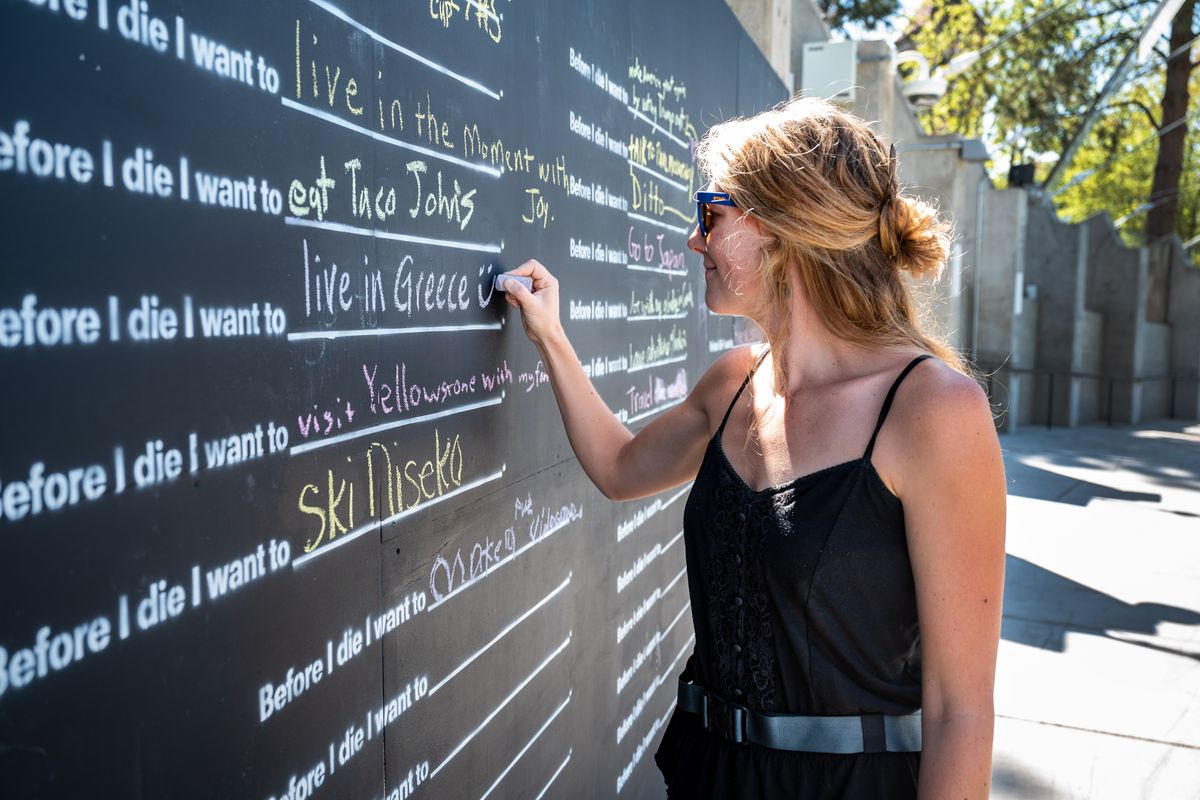‘Before I Die’ wall brings community connection in Riverfront Park

With a lack of community events in Riverfront Park due to COVID-19, an art installation at the U.S. Pavilion is providing a chance for community connection.
“With COVID, we were struggling to find ways to meaningfully engage with the community,” said Jonathan Moog, director of Riverfront Park.
The “Before I Die” wall was installed at the beginning of September in Riverfront Park as part of a larger community art project.
The original “Before I Die” wall was created in 2011 on an abandoned house in New Orleans by artist Candy Chang after the death of a loved one. Since then, more than 5,000 walls have been established in 78 countries.
Each wall is created by local residents who want to make a space in their community to restore perspective and share more with one another,” the project’s website reads. “Each wall is a tribute to living an examined life.”
In Spokane, the installation is a chance to touch base with a community that has been kept apart since the pandemic started earlier this year.
“Riverfront over the last year or two has been engaging with new types of events,” Moog said. “These are what we call community engagement events, and they’re usually smaller scale than the mega events we have in the park.”
The 8-foot-tall, 36-foot-long wall features 96 blank spaces with “Before I die…” written in front of them.
The wall is cleaned off each morning or when the spaces are full, Moog said.
Since the wall was put up a few weeks ago, messages of hope, joy and amusement have graced the wall.
“We thought this would be a perfect fit for Spokane, just given the fact that we have really monumental cultural movements and changes going on,” Moog said.
“Society seems to need hope, and we thought this would be the perfect thing to bring at this point.”
The messages on the wall are documented each day before they’re erased. Some of Moog’s favorite messages have been the ones of hope.
“‘I want to bring the world truth,’ or the simple ones that reflect the joy of everyday life like, ‘I want to own a dog,’ ” he said.
“What we’ve seen the community write on the wall the last three days, they’re really messages of hope,” Moog said.